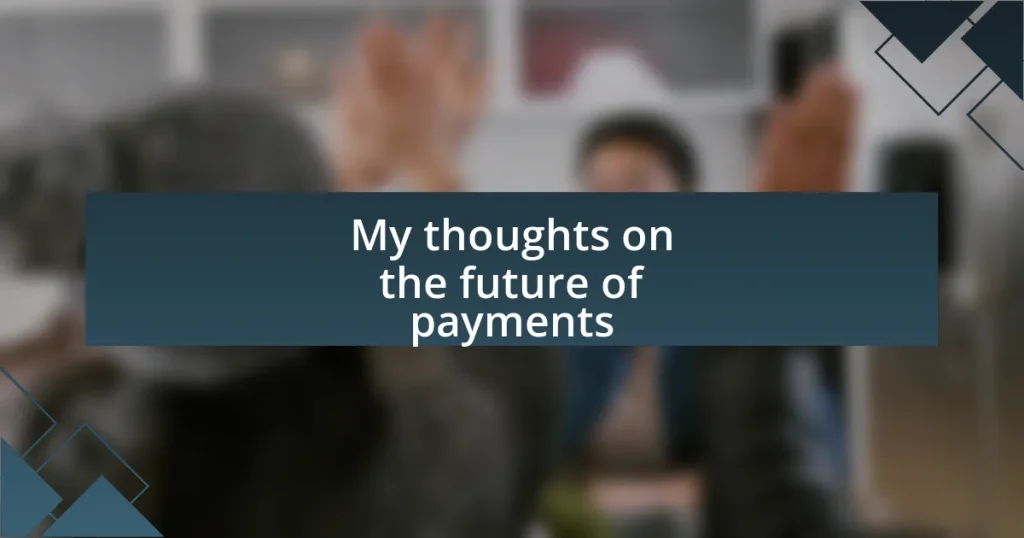Key takeaways:
- Biometric authentication enhances convenience and security in digital payments, potentially eliminating password issues.
- The rise of cryptocurrencies offers flexibility and lower fees, gaining mainstream acceptance among retailers.
- Biometric payment technologies like fingerprint and facial recognition offer seamless transactions but come with security and privacy concerns.
- Addressing security concerns in payment systems is critical due to rising cyberattacks, emphasizing the need for robust measures like two-factor authentication.
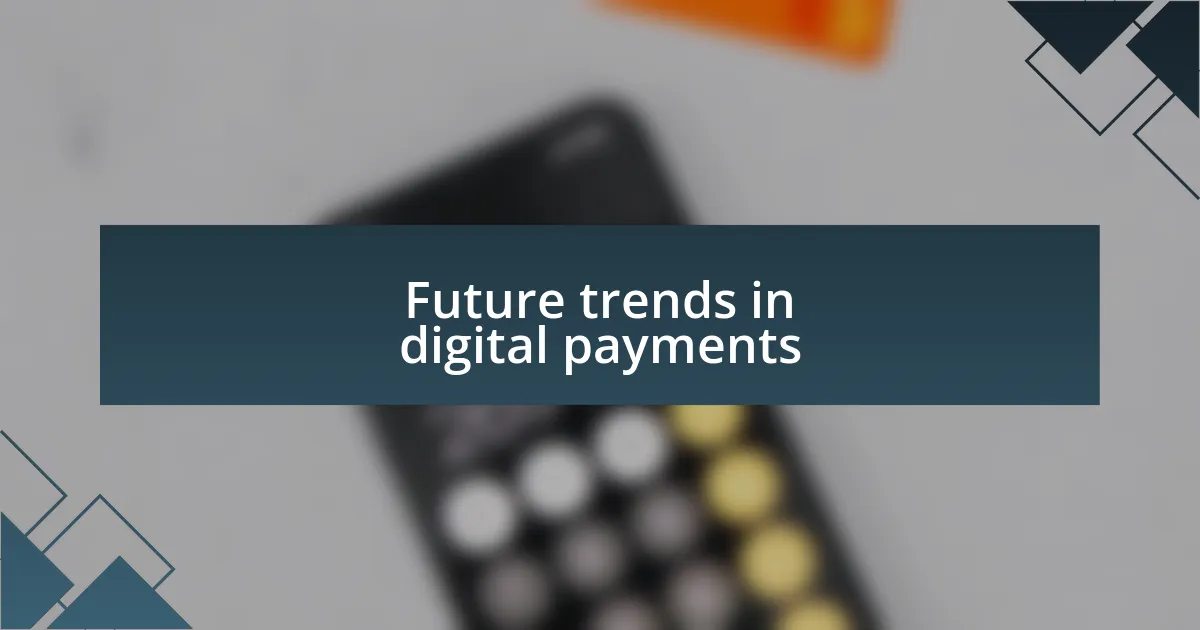
Future trends in digital payments
One trend I’m particularly excited about is the increasing use of biometric authentication in digital payments. Imagine simply using your fingerprint or face to authorize a transaction—it’s not just convenient, it adds a layer of security that feels almost futuristic. Have you ever wondered how often you forget your passwords? Biometric options could eliminate that frustration entirely.
Another fascinating shift I see on the horizon is the rise of cryptocurrencies and decentralized finance (DeFi). There’s something invigorating about the idea of making peer-to-peer transactions without relying on traditional banks. I remember the skepticism I felt when Bitcoin first emerged, yet now, it seems like a viable alternative for many. How will it change our financial landscape in the next few years?
Lastly, the integration of artificial intelligence into payment systems is truly transformative. Using AI to predict spending habits could tailor financial services to our needs in real-time. I’ve noticed that personal finance apps are already adapting to this trend, and I can’t help but wonder: how far can we push this technology? The potential for personalized financial experiences is enormous.
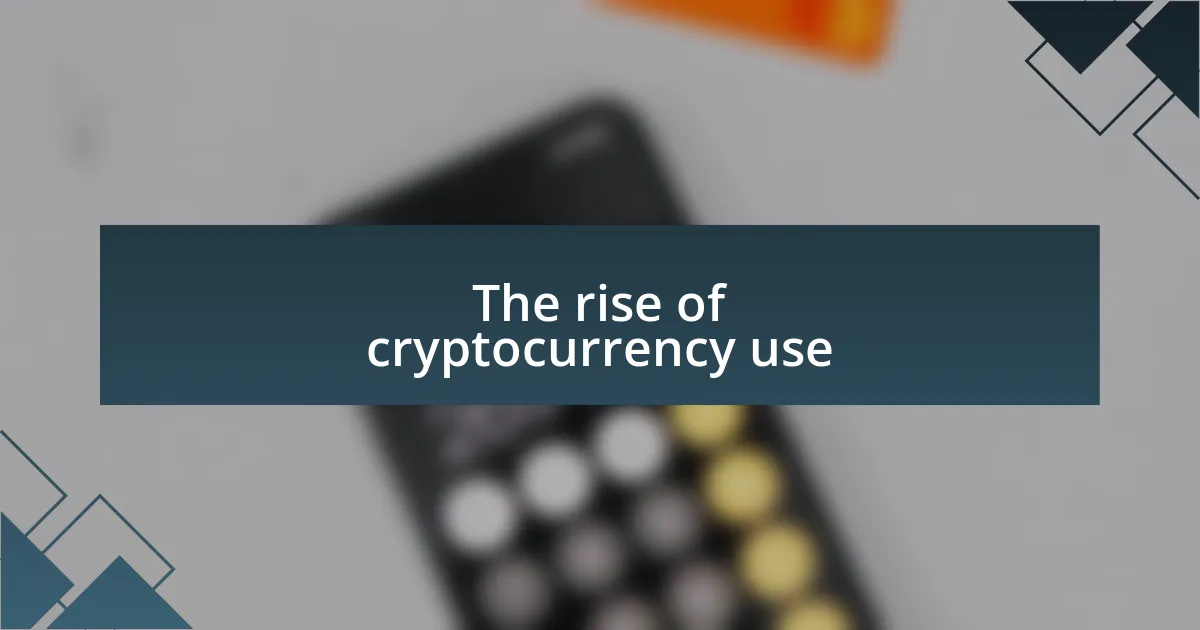
The rise of cryptocurrency use
The rise of cryptocurrencies has genuinely changed the way I perceive money management. I remember when I first heard about Bitcoin; it sounded like a risky gamble to me. However, witnessing its growth and the growing acceptance of digital currencies made me rethink their potential. Now, whether it’s for investing, remittances, or everyday purchases, cryptocurrencies offer flexibility that traditional fiat currencies can’t match.
Key points about the rise of cryptocurrency use:
- Increased mainstream acceptance by retailers and e-commerce platforms.
- Lower transaction fees compared to traditional banking services.
- Enhanced privacy and security due to blockchain technology.
- Accessibility for unbanked populations globally.
- Innovative features offered by decentralized finance, like lending and staking.
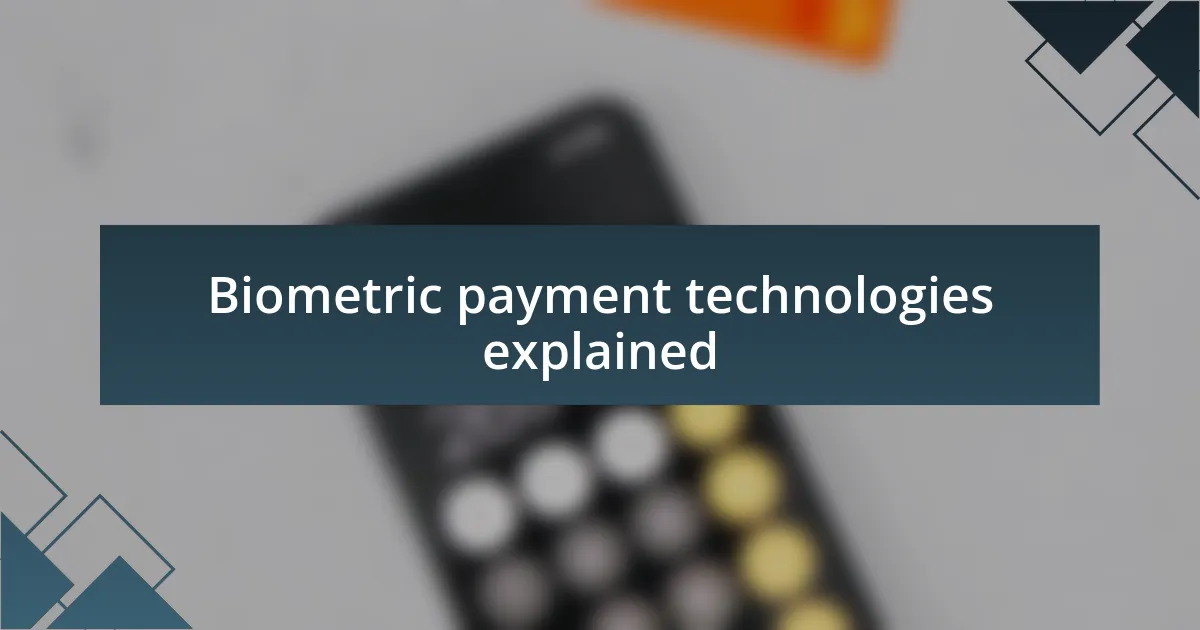
Biometric payment technologies explained
Biometric payment technologies are rapidly evolving, and their implications for the future of payments are fascinating. I still remember the first time I paid for a coffee with my fingerprint. It felt almost surreal; technology was finally catching up with our daily lives in a very personal way. Biometric systems, such as fingerprint, facial recognition, and voice recognition, authenticate identity through unique physical characteristics, offering an added layer of security and convenience.
These technologies facilitate seamless transactions while minimizing the risks associated with card fraud or identity theft. In my experience, the ease of using a simple touch or glance is an experience I appreciate, especially in our fast-paced world, where every second counts. Imagine standing in line and simply looking at a device to complete your purchase; it’s not just convenient, but also engaging and futuristic.
As we dive deeper into this concept, it’s essential to compare various biometric methods. Understanding their strengths and weaknesses can illuminate their potential roles in our payment systems. Each method has its unique characteristics that cater to different preferences and security needs.
| Biometric Method | Advantages | Disadvantages |
|---|---|---|
| Fingerprint Recognition | High accuracy, widely accepted | Can be spoofed with replicas |
| Facial Recognition | Fast and convenient | Privacy concerns regarding data storage |
| Voice Recognition | User-friendly, hands-free | Less reliable in noisy environments |
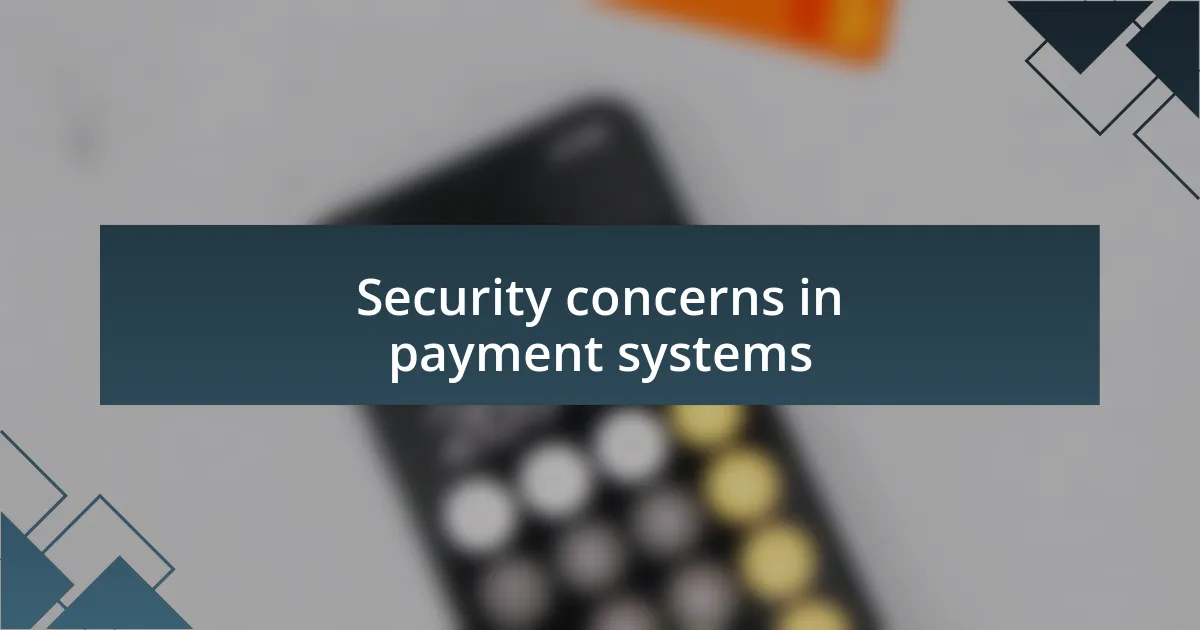
Security concerns in payment systems
When we discuss security concerns in payment systems, I can’t help but think about the alarming rise in cyberattacks. Just last year, a friend of mine had her credit card information stolen online, and it was a jarring experience for her. She was left feeling violated and vulnerable, illustrating how crucial it is for payment systems to prioritize robust security measures.
I often ponder whether security features in payment technology are keeping pace with emerging threats. In my experience, implementing two-factor authentication can significantly reduce fraud attempts, but it requires users to stay vigilant. Have you ever been frustrated by needing to jump through extra hoops to access your funds? While it may feel tedious, that extra layer of verification can save you from a potential headache down the line.
Then there’s the issue of data privacy. I remember reading about a major retailer that suffered a data breach, exposing millions of customer records. It’s a chilling reminder of how breaches can compromise our trust in payment systems. With personal information on the line, it’s essential for companies to invest in comprehensive security protocols that not only protect our financial data but also safeguard our peace of mind.











